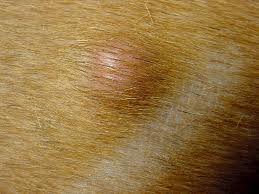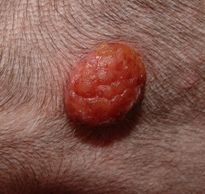Is that skin lump on your pet just a lump, or the first sign of life threatening cancer?


Which is the nasty cancerous lump? (Answer below!)
Is that lump on your pet just a lump, or the first sign of life threatening cancer? Our pets often get lumps on their skin as they get older. It’s impossible to tell from the look and feel whether they are an aggressive type of cancer that may grow or spread, or not. I’m going to show you how to do a lump check on your pet. If you find any, get your vet to check them out!
Step 1 – Keep a Record
The best way to keep track of any lumps you find is to have a page with a picture of the belly and the back of your pet’s species. Record the location of any lumps you find. Other information, such as appearance and size, is also useful.
Step 2 – The Head
Carefully examine the skin of your pet’s head, including under their chin, in their ears and their gums. For pets with thicker fur, rely on your sense of touch more than what you can see. For pets with long hair, this will be easiest just after they’ve been groomed.
Step 3 – The Body
Including their armpits, belly and bottom. Roll them on their back so you can have a good look and feel. Also check for breast lumps.
Step 4 – The Legs and Tail
This includes the insides of their legs and between their toes! Check the tail from base to tip.
Step 5 – Alert Your Vet
Have your vet check each lump as pets often have several types at once. Your vet will take a sample from each lump to examine under the microscope – this can be done in the consult room while your pet is awake. This will help them find out what type of lump your pet has. They will then be able to make recommendations as to what treatment is required. Remember, the earlier we assess these lumps, the better the chance we have of catching and treating cancer before it spreads.
ANSWER: The lump on the left is a mast cell tumour, a potentially nasty lump that can not only cause large areas of localised swelling and pain, but can even cause death. The lump on the right is an adenoma, a benign mass that only requires removal if it is starting to annoy your pet.





